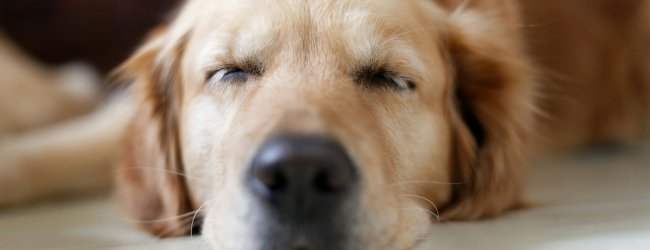Dog Biting 101: Managing Your Buddy’s Toothy Troubles
Got a dog biting and chewing on everything in sight? It might just not be teething - but a combination of factors, including boredom, stress or anxiety. Here's all you need to know & how to get to the bottom of their biting behavior.
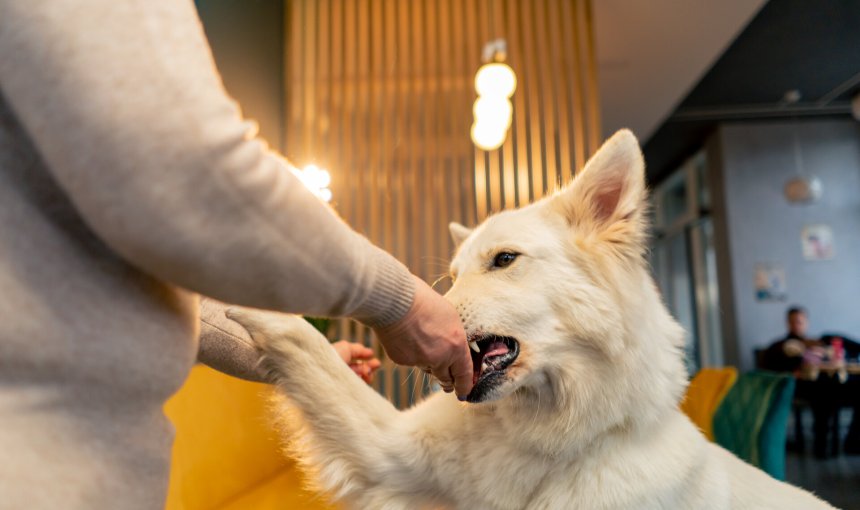
There’s nothing like coming home to find your buddy having chewed up your slippers or even running to you – and clamping their little jaws around your foot or when you try and pet them. But as it turns out, dog biting isn’t just a matter of chew toys and teething. It can also signal problems like boredom, stress, anxiety, and even fear.
On the other hand, you might’ve also wondered what to do if you find your dog biting itself – like its paws and feet. Which can also threaten their health and safety – and yours as well!
Besides, many of the underlying causes behind biting behavior can lead to wider problems, including your buddy running away from you.
So here we’re going to dive into these root causes of your buddy’s biting behavior and figure out what you can do to build you two a happy, healthy, bite-free life together. Let’s get started.

Find out how your dog spends their time.
Read moreWhy is my dog biting & chewing on everything?
Before we dive into the specifics, it helps to understand why dogs bite in general. And in a nutshell: biting is one of the first ways dog learn to interact with the world around them, as puppies.1
It’s why teething is one of the primary causes you’ll find your dog biting. Puppies often bite to relieve the discomfort of their baby teeth falling out and adult teeth growing in.
Besides, dogs might also bite during play – it’s a natural behavior for them.2 Play biting is how they interact with other dogs, as well as humans, and also learn how hard they can bite. Which is where both chew toys and regular training play a role in teaching your buddy their boundaries and weaning them off this behavior.
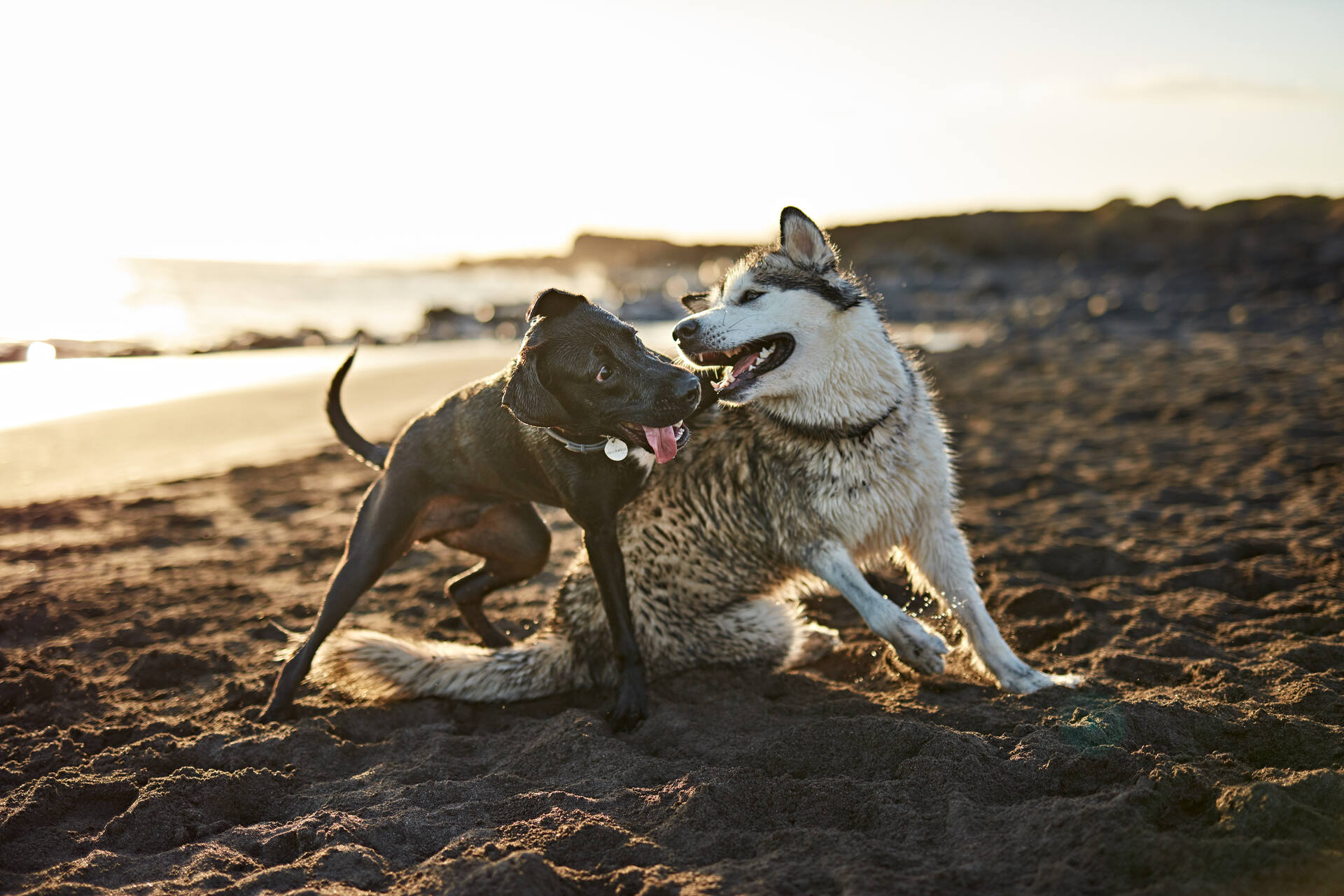
⚠️ Because unfortunately, a dog biting might always end up in the worst case scenario if you don’t take steps to figure out the root cause of it.
And even worse:

Dog bites are not rare; these are common events that occur in normal family’s lives and it is estimated that 15% of dog owners have been bitten by their own dog.
– VCA Animal Hospitals3
So besides teething or play, your dog might also be biting as a reaction to:
Fear, stress, or anxiety
A fearful dog might bite as a means to defend itself. It’s a learned behavior they’ve picked up from their environment. Which, sadly in some cases, might mean a history of abuse, violence, and mistreatment – but might also signal medical problems, like anxiety.4
You might observe this if you’ve just adopted a dog from a shelter, which can signal their experience of trauma or violence. Make sure to work with your shelter staff and vet to figure out how to help your new buddy overcome these experiences.
Besides, building your dog’s trust can take time and effort. You can start by ensuring:
- A safe, calm, quiet environment for them at home (especially when you’re not around), full of toys and puzzles to keep them occupied.
- Plenty of quality time together, especially once you build a routine of walks, meal times, and playtime. Make sure not to leave your buddy home alone for too long.
- Regular checkups with your vet to ensure you’re getting your buddy any medical support they need. (Especially anti-anxiety medication, if necessary.)
- Gently-enforced rules and discipline, including regular training. This can also help your buddy regain a sense of routine and predictability, which can help calm them down – and also learn they don’t need to bite to defend themselves.
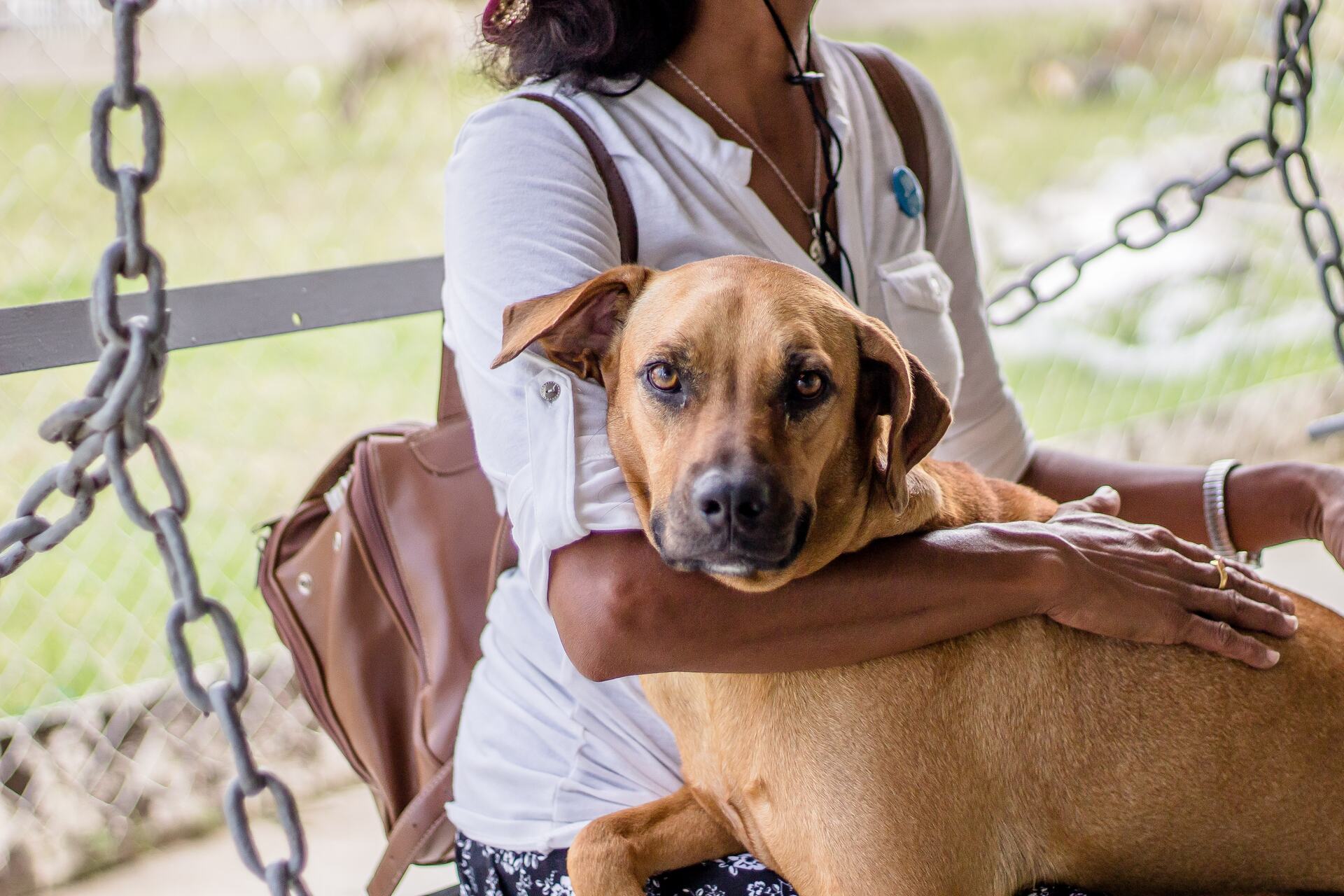
⚠️ A dog that’s spooked by loud noises, anxious you’ll abandon them, or stressed out from a change in routine is one that’s more likely to run away from home.
So make sure to get your buddy microchipped – and consider letting your friends and family know, so they can also keep an eye out on in your neighborhood. (And alert you if they see your buddy out and about.)
💡Else, if you’ve got a real escape artist at home, a GPS tracker for dogs can work wonders. With just a glance at your phone, you can track yours in real-time, over an unlimited range, and even while on vacation.
(If you’ve invested in a Tractive device, that is.)
Read more:
- Mela the Shelter Dog: Safe At Every Step With Tractive
- Fearful Dog: Our Expert Reveals Everything You Need To Know About Fear In Dogs
- How To Manage Separation Anxiety In Dogs
- Noise Anxiety In Dogs: Why Is My Dog Scared Of Loud Noises?
- 5 Ways to Stop Your Dog from Being Frightened during a Storm
- Dogs & Fireworks: How To Keep Your Dog Safe On The 4th Of July
Improper socialization
Like we’ve covered, play biting is a common reason for your buddy getting a bit “nippy.”5 It’s what they learn while growing up with Mama dog and their littermates – though ideally, they should also learn that if they bite too hard:
- Mama dog will get mad and growl at them
- Their littermates might yelp because they’re hurt – and Mama dog will get mad and growl at them
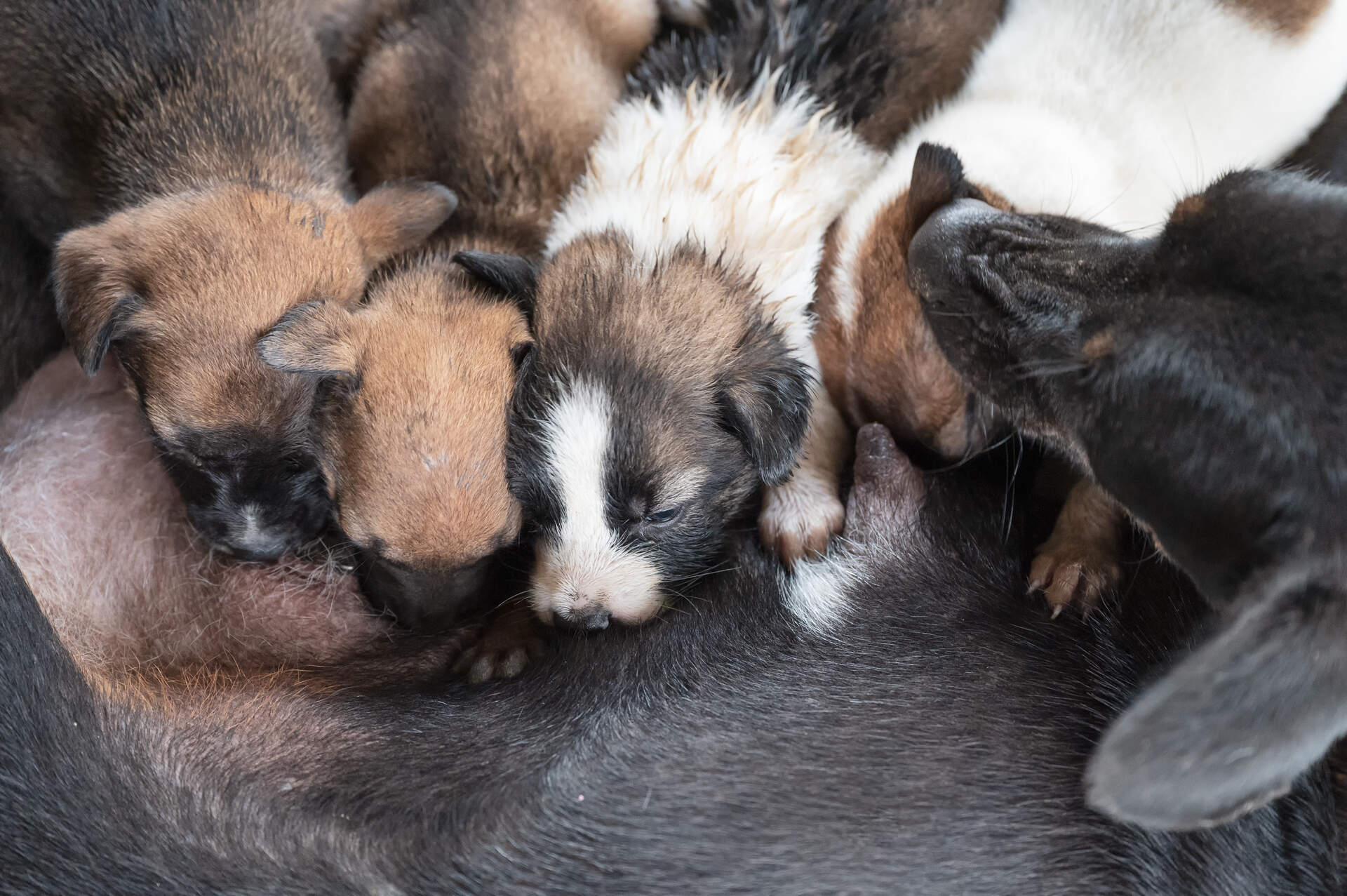
So if you’re adopting a puppy, make sure to check for details like how much time your new little buddy spent with their mother and litter.
- If they weren’t able to spend much time together, your dog might not have learned not to bite at an early age.
- Meaning they might not be able to tell the difference between a playful nip – and a harder, significantly more painful bite!
- That’s why if you’ve got a puppy biting you, they might do so out of excitement or impatience. (Like nipping at your heels.)
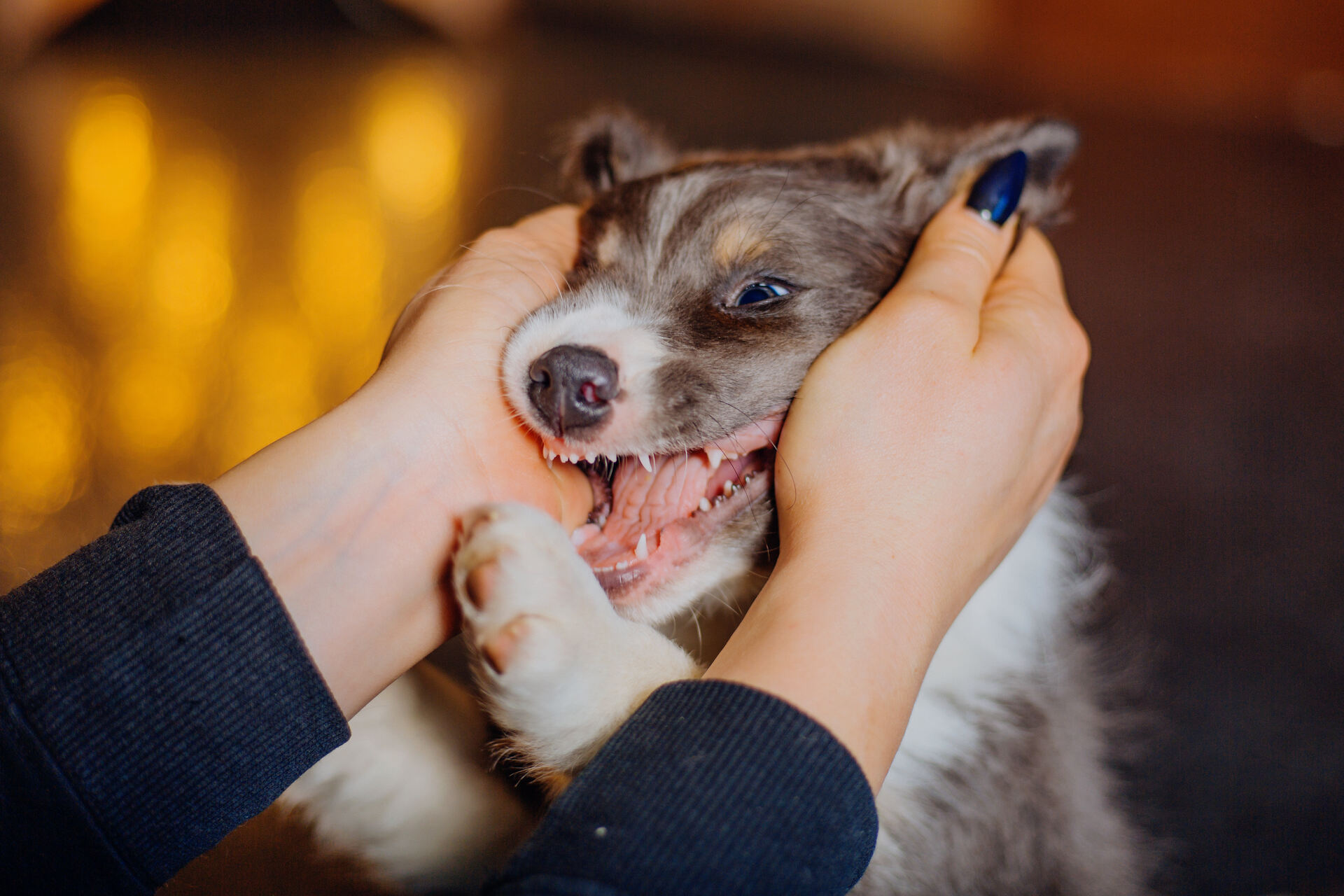
⚠️ Your dog’s body language can help you pick up on whether they’re biting you out of fear or aggression – or they’re just fooling around.6 (And haven’t learned their boundaries yet.) Watch out for signs like:
- A wrinkled muzzle
- Exposed teeth
- Lips curled back
All these signs indicate your dog might be biting out of aggression – and not playful behavior instead.
Pain or discomfort
If you’ve got a dog biting you whenever you try and pet them or approach them – and it seems to have begun out of nowhere – drop by your vet. It might be due to them struggling with an illness, infection, pain, or discomfort.7
In some cases, your dog might even bite themselves to self-soothe from any localized pain or injury. (If you were wondering, “Why is my dog biting his foot?”) These might include causes like nerve damage and even arthritis, which you might find more so among senior dogs.8
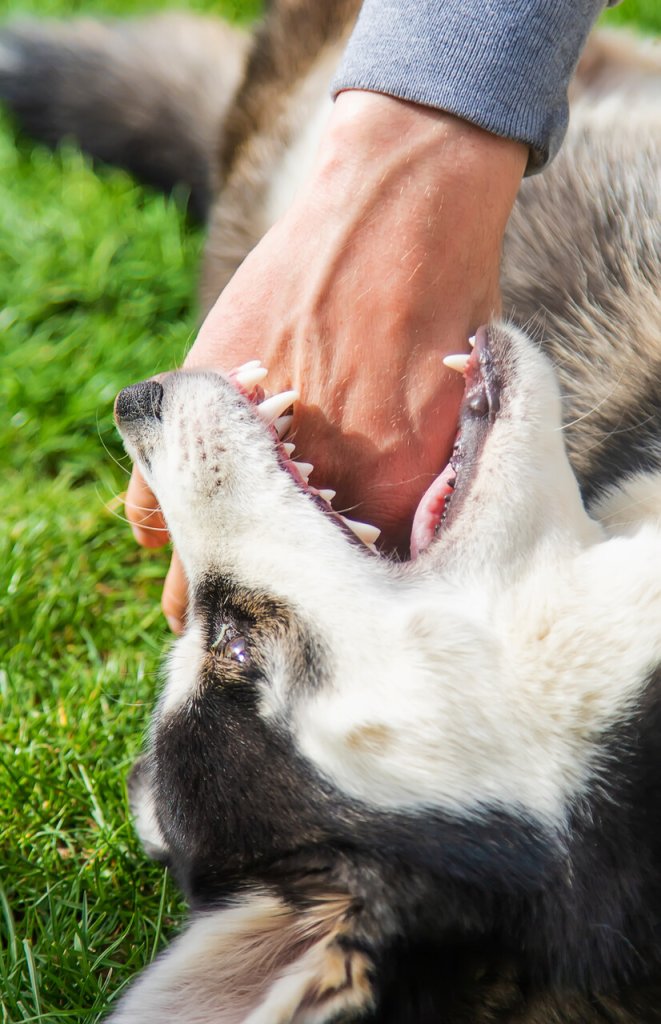
Now your buddy’s evolutionary instinct in these cases would be to:
- Mask any signs they’re in pain or not doing so well, health-wise
- Seclude themselves somewhere “safe” to manage it by themselves
- React defensively if someone finds out they’re struggling (which may or may not be a nip or a bite)
In these cases, it’s a good idea to get your buddy to the vet for a full checkup to rule out any medical reasons behind their pain or discomfort. (And reactive biting, if any.)
💡Tracking your dog’s activity can also help you pick up on a drop in their daily movements – which could signal an illness, infection, or pain.

“Keep track of your dog’s energy levels, especially how long they are able to walk.
If you notice significant declines, it could be a sign of pain, heart disease, or other illness.”
– VCA Animal Hospitals9
Which you could do by jotting down your buddy’s symptoms – or using the actionable data you get from an Activity Tracker built for dogs. (And loved by dog parents around the world.)

With its built-in motion detector, your trusty Tractive device:
- Logs in your dog’s active minutes throughout the day
- Picks up on a dip or a spike in your dog’s activity
- Alerts you if there’s an abnormal change in your dog’s activity
All of which can help you have a more productive conversation with your vet. (Rather than just relying on memory and potentially missing out on some important details.)
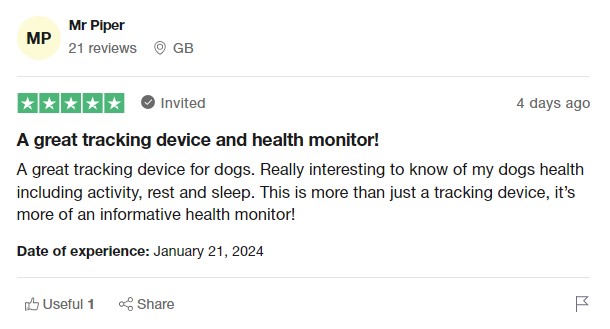
Their breeding history
Are some dogs more aggressive than others – naturally? Not necessarily. Their breeding history as guard dogs, hunting dogs, or even herding dogs can play a role, definitely.
But it’s more so years of training and socialization that has a greater impact on redirecting their energy towards specific “jobs” and tasks. (Which may or may not include biting.)
For example dogs bred as:
- Guard dogs might have been trained to bite down on an escaping “target”, to hold them in place and prevent them from slipping free.
- Hunting dogs are usually trained to clamp down on prey animals to prevent escape. These dogs usually have a high prey drive and need a firm hand on the leash when you’re out in the woods or nature together.
- Herding dogs tend to “nip” at the heels of cattle or sheep on farms to keep them in line. Without a farm of animals to boss around, they might do the same to you, your kids, or even others outdoors!
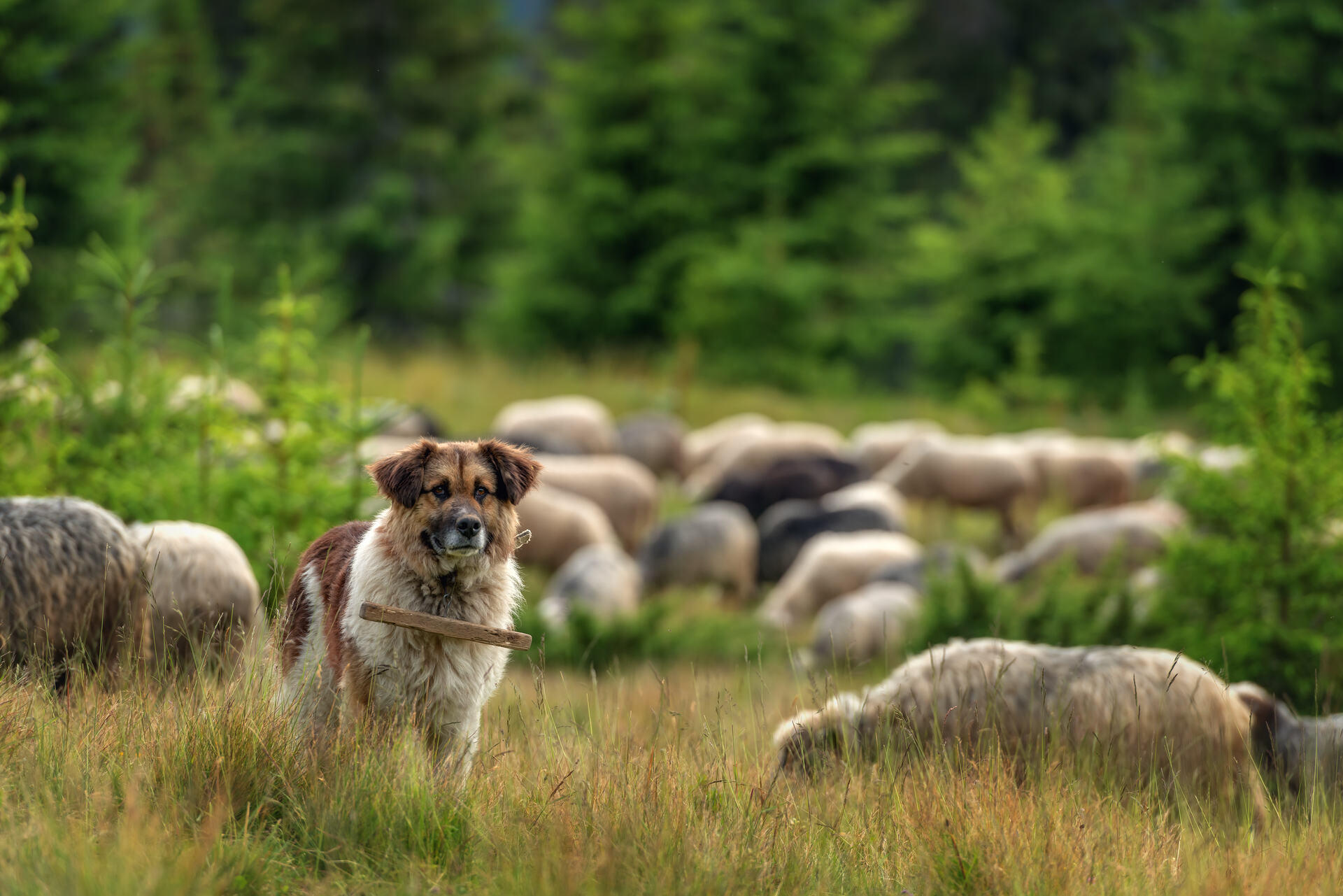
💡So while your dog’s breeding history does play a role, regular training and socialization can help them better learn their boundaries – and that their environment now is very different to that of their ancestors’. Meaning they don’t need to bite or chase down prey, a running target, or other animals to do their “job.”
Other reasons your dog might bite
Besides these broader reasons, you might end up dealing with a dog biting due to:
- Surprise, like if you’ve just woken them up from sleep – or if they were in the middle of a dream. (Or a nightmare.) In these cases, call out your dog’s name softly rather than waking them up, so they feel calmer.
- Guarding what’s “theirs”, like food, toys, or other objects. Teaching your buddy to put their toys away as a “job” can come in handy here.
- Frustration, especially if they feel “trapped” – like when they can’t reach that yummy treat because you’ve got a firm hand on the leash.
- Behavioral issues, including boredom or compulsive behaviors. This might lead your dog to chew on objects, but also their paws and feet at times.
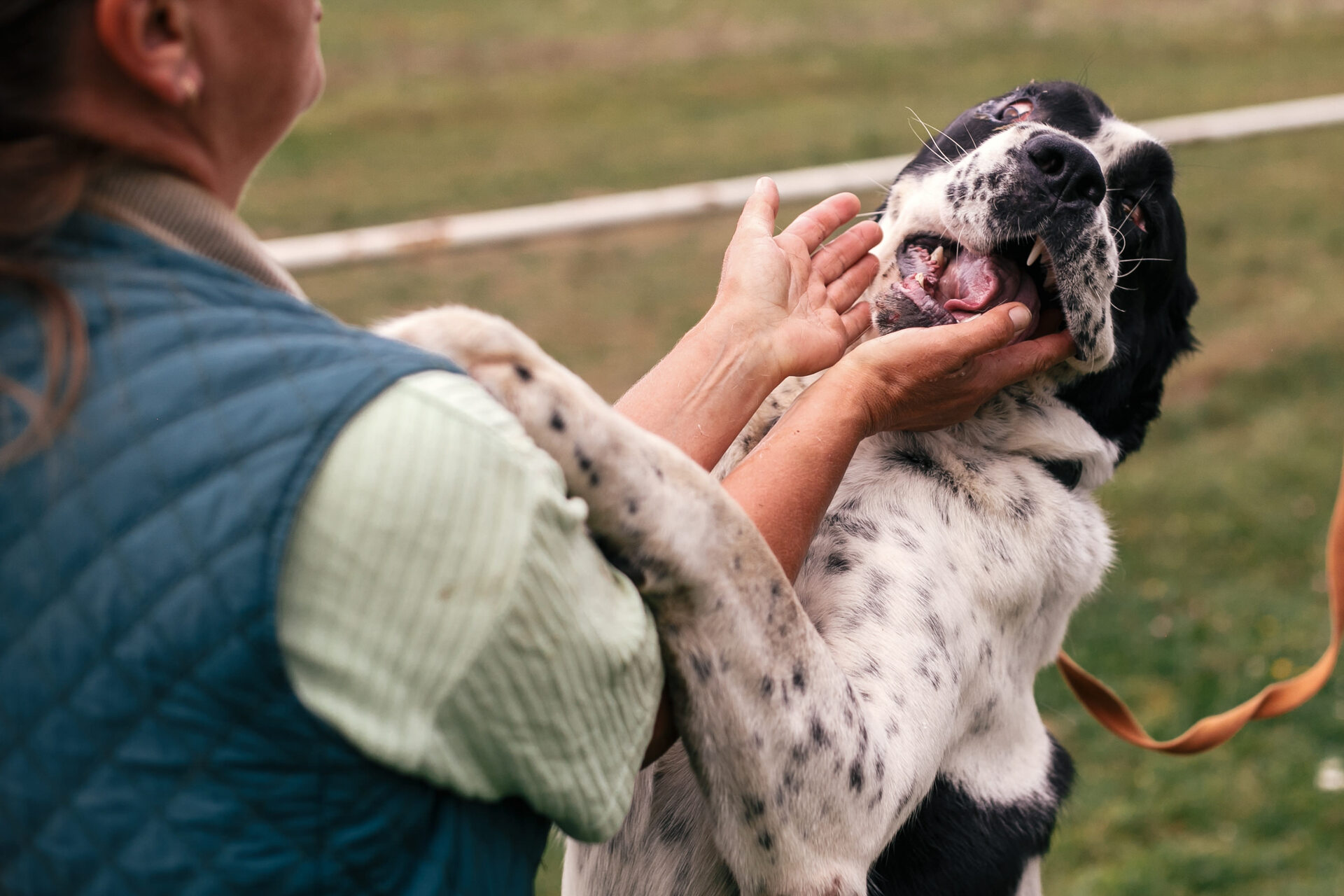
So in a nutshell, it’s a combination of instinct and learned behaviors that might lead your dog to bite. Much of which you can address with proper training, socialization, and a ton of patience.
My dog is constantly scratching and biting himself – what gives?
Now if you’re finding yourself dealing with a dog biting themselves – and not others – it might end up being a bigger problem if left unattended.
Because as the weather gets warmer and you two end up outdoors more often, you’re also likely to run into a few pesky allergens, critters, and other reasons you might find your dog biting, scratching, and nipping at themselves.
You might, for example, experience your dog biting its paws or a specific foot – which may be due to:
Allergies
Much like humans, dogs are also vulnerable to food allergies, environmental allergens (like pollen or dust), as well as contact allergies (from substances they walk on.) So your dog might end up biting their foot due to itchy paws from coming in contact with something they’re allergic to.
Your vet can recommend the best treatment for your buddy, which might include a change in diet or specific medication. They might also recommend allergy testing to figure out what’s causing your dog’s itching – and reactive biting.
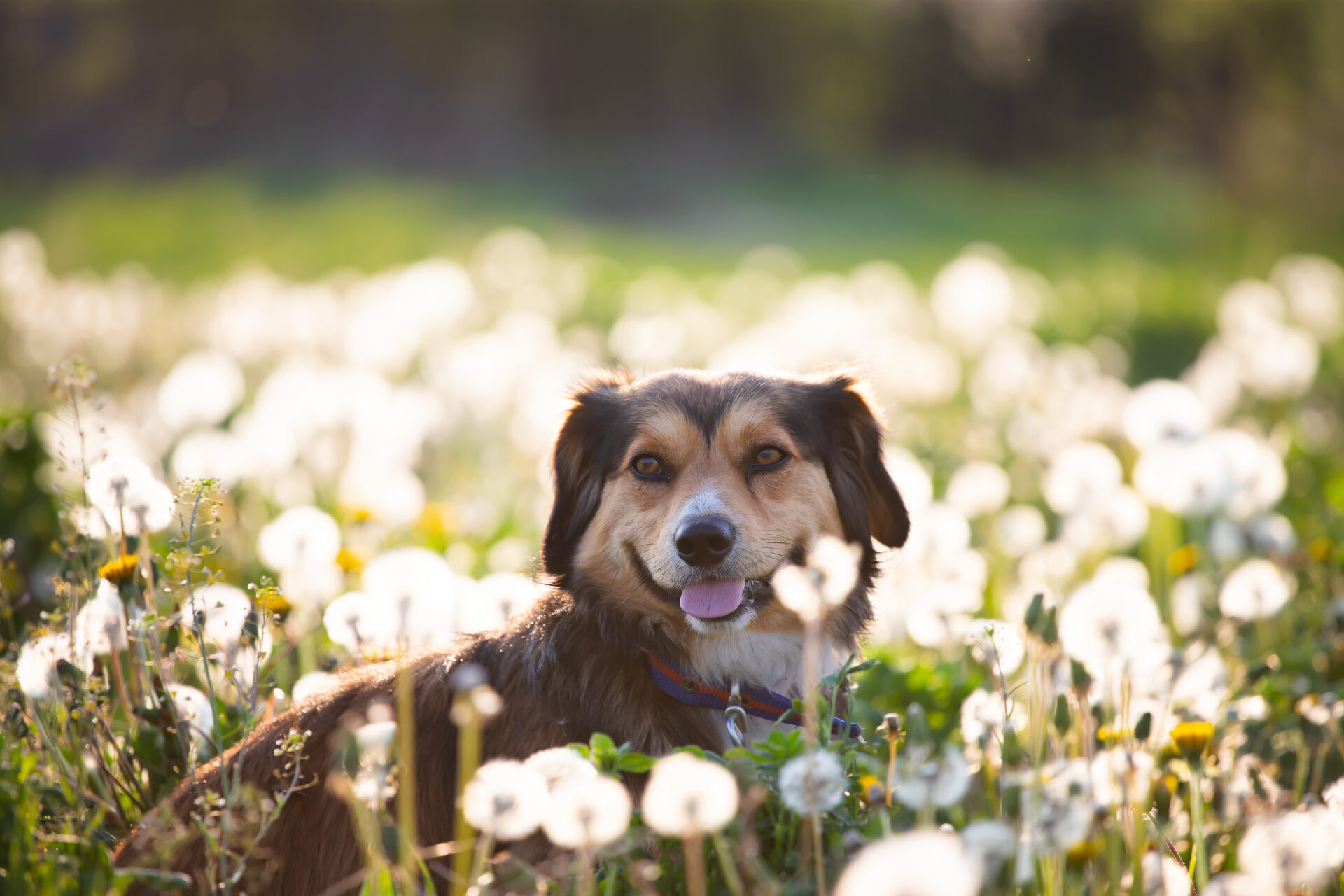
Besides:
- Regularly bathing your dog can help remove allergens from their coats. (And prevent them from spreading elsewhere.)
- Using air purifiers at home can also reduce environmental triggers, like dust.
Read more:
- Dog Pollen Allergy: Dealing With The Springtime Sniffles
- 8 Best Tips On How To Protect Dog Paws In Snow
- Toxic To Dogs: Dog Parents Beware Of These Common Dog Poisons
- The Danger Of Snail Bait For Dogs
Infections
Depending on where you two are off wandering outdoors, your buddy might come in contact with bacteria or fungi – which can also lead to itchy, irritated paws. Watch out for signs like:
- Redness
- Swelling
- Discharge
Your vet can prescribe appropriate antibiotics or antifungal treatments to help your buddy deal with the discomfort. Besides, make sure to clean out your dog’s paws regularly to prevent infections.
Read more: The Fun(gi) Facts: Can Dogs Eat Mushrooms?

💡And if you’ve invested in a Tractive device, you’re in luck! With our Danger Reports feature, you can quickly and easily mark an area as a “danger” zone – if it’s got poison bait, traps, wild animals, poisonous plants, and more.
You can also broadcast your report to other dog parents via your Tractive app. Doing your role as a responsible dog parent – and also keeping your buddy safe.
Injuries
If you’ve both been exploring the woodland, your buddy’s paws might end up with small cuts, splinters, or abrasions – which can cause discomfort. This is from them coming in contact with thorns, burrs, or even sharp objects like glass.
So make sure to inspect your buddy’s paws thoroughly once you’re back home and keep them clean.
- If you do notice a wound, make sure to carry some antiseptic solution and bandages to wrap it securely.
- Protecting your dog’s paws with boots can also help prevent injuries, depending on the trail.
- Get in touch with your vet if your dog’s injuries don’t heal promptly.
Read more: How To Whip Up (And Use) A Dog First Aid Kit
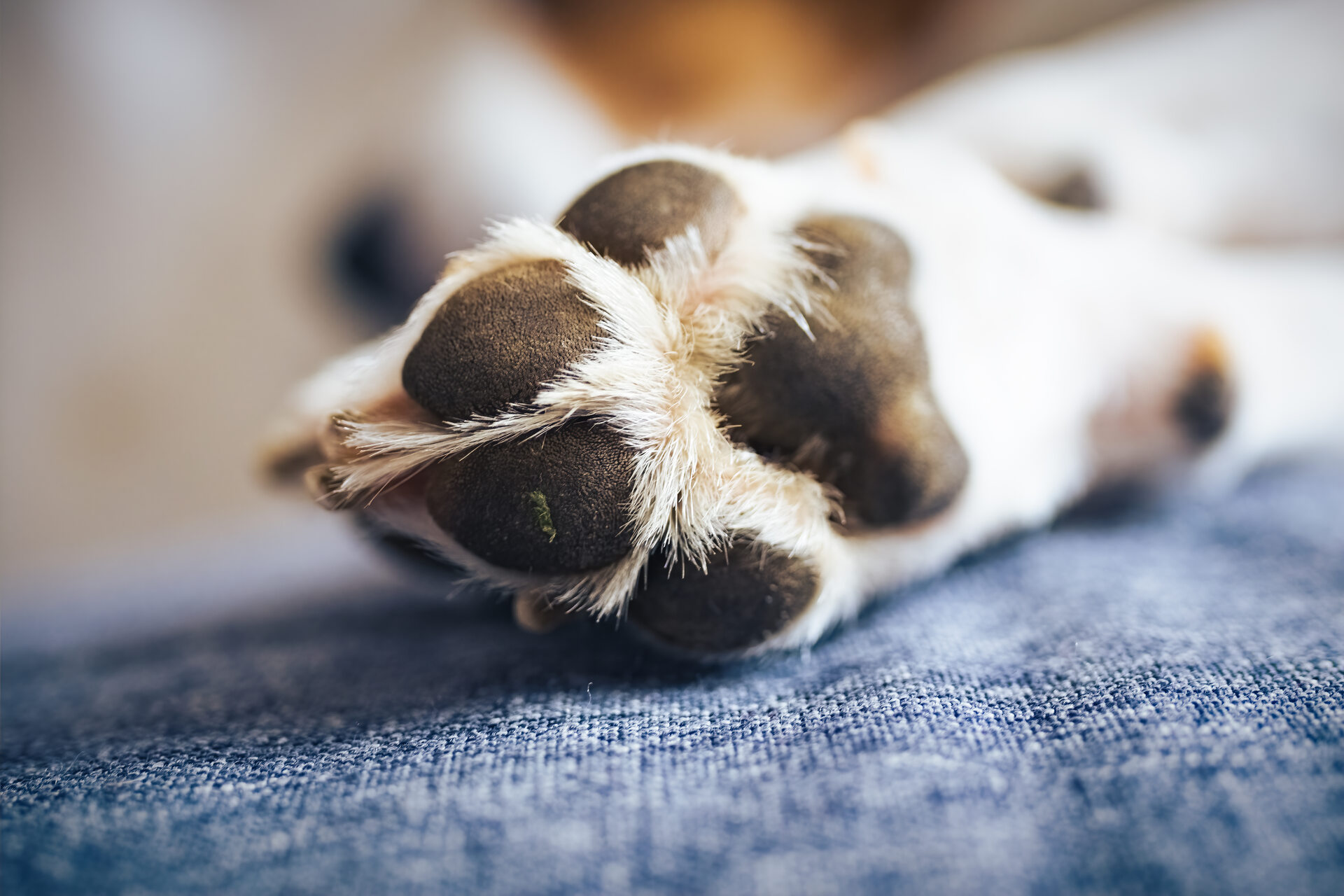
Parasites
If you’ve got a dog losing hair along with constant biting and scratching at themselves, it might be due to pesky critters like ticks, mites, and other parasites. These can infect your dog’s fur and cause intense itching and discomfort – which might lead to your dog biting and itching themselves raw.
Much of the time, these microscopic organisms aren’t visible to the human eye – though they could still be present.
- Your vet can do a full checkup of your dog’s fur and prescribe you the appropriate parasite prevention treatment. (Including flea combs and regular baths with medicated flea shampoos.)
- Besides, it’s not a bad idea to treat your backyard to get rid of any pests – so it’s safer for both you and your buddy to hang out in. In more serious cases, you could also hire an exterminator.
- Regularly grooming your dog’s fur, paws, and nails can help you catch on to these parasites early – and get them for a checkup right away.
Read more:
- Tick Control for Dogs: How to Prevent and Remove Tick Bites on Dogs
- 3 Ways To Prevent Mange In Dogs (And Why It Happens)
- 5 Easy Dog Grooming Tips You Can Do At Home: The Ultimate Guide For Dog Parents
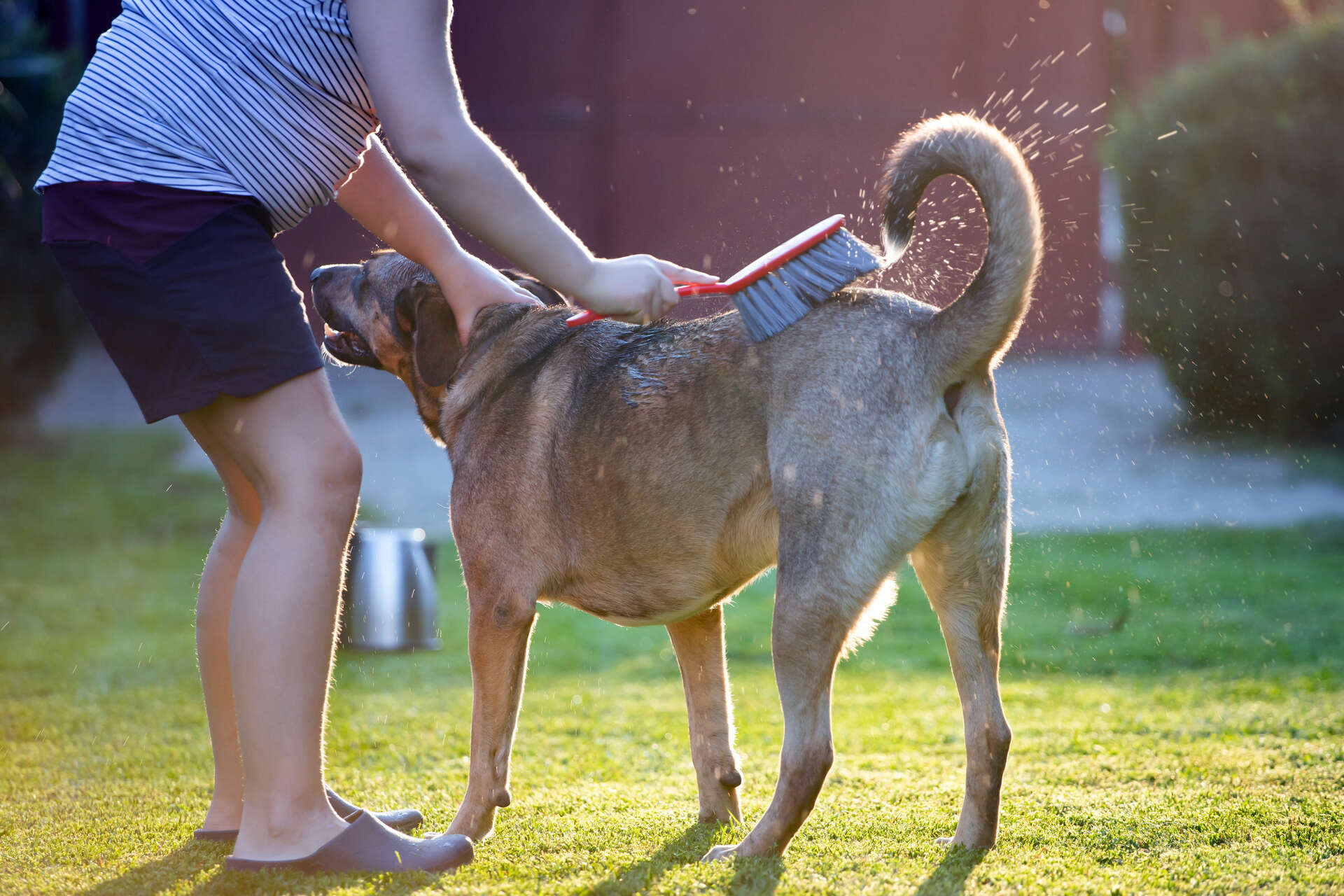
💡Your Tractive device comes with built-in GPS functions to track your dog’s location in real-time – no matter how far they wander.
Besides, it also logs in your dog’s favorite hangout spots over the last 24 hours. (Or 365 days on a Premium subscription.) Here’s your buddy’s Heat Map & Location History pictured:

Which can help you figure out if their favorite spots are:
- That patch of flea-riddled woodland nearby,
- Your neighbors’ pesticide-strewn backyards,
- That one bit of fencing near your property that needs patching
- Or other areas they might come in contact with something infectious, smelly, toxic, or potentially allergic
Most importantly, your dog’s Heat Map & Location History can help you figure out where to look first if they go missing.
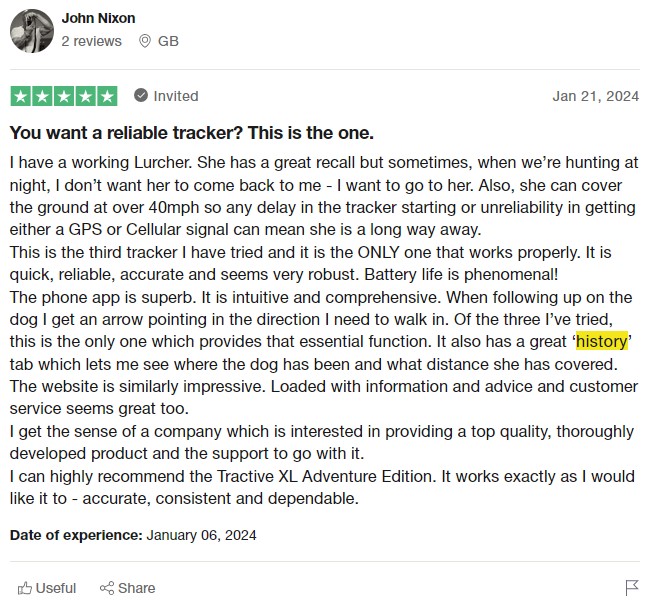
Other medical problems
At times, you might end up with a dog biting themselves due to dry, itchy skin. Which might be caused by low humidity, harsh shampoos, nutritional deficiencies, or other underlying health conditions, like atopic dermatitis or even hypothyroidism. (Which can make your dog vulnerable to infections because their immune system is weakened.)
Besides, if you’ve got a dog biting its tail, it might also be due to anal gland issues, a parasitic infection, or even injury.
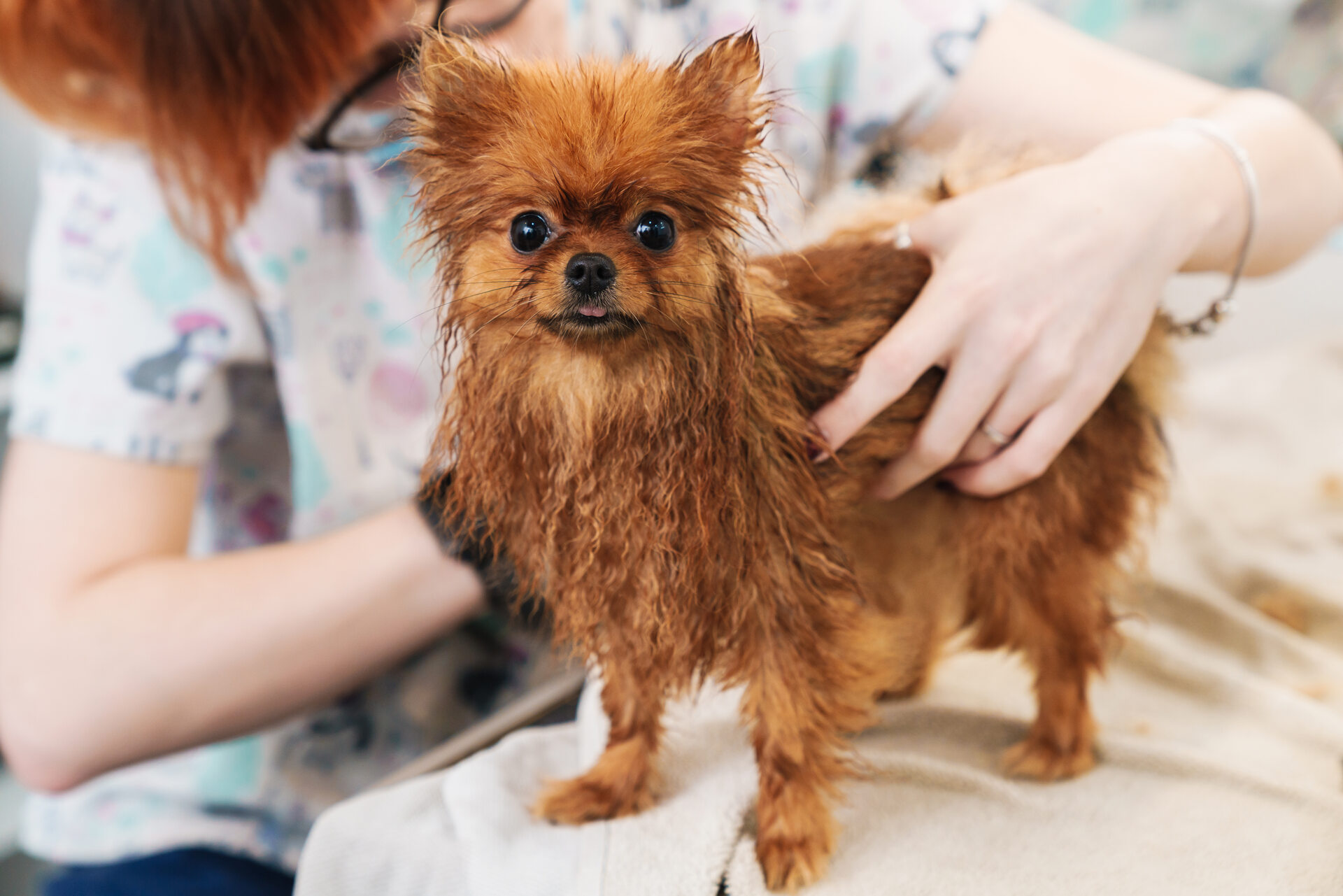
Your vet can help identify any underlying causes and may prescribe:
- Medically-approved dog shampoos
- A change in diet, including foods meant to improve your dog’s skin health
- Special medication meant to help reduce itching
Besides, regularly brushing your dog’s coat can also help prevent skin problems and distribute the oils in their fur better.
How to stop a dog from biting (both itself & others)
Whether it’s self-directed or towards others, putting a stop to dog biting behavior takes time, patience, and consistency.
So first things first, it makes sense to identify what’s causing your dog to bite as a reaction. Whether it’s fear, anxiety, stress, improper socialization – so you can best figure out how to address it.
Start socializing your dog early
By getting your buddy used to other pets and people, you can help them learn what’s good dog etiquette – and what isn’t. This includes bite inhibition and how to get along with others without causing them harm.
This doesn’t just apply to puppies, but to adult and senior dogs as well. (Depending on when you’ve adopted them.) Socializing them to their new environment helps them learn through interacting with other dogs, pets, and humans, especially what’s considered acceptable behavior.
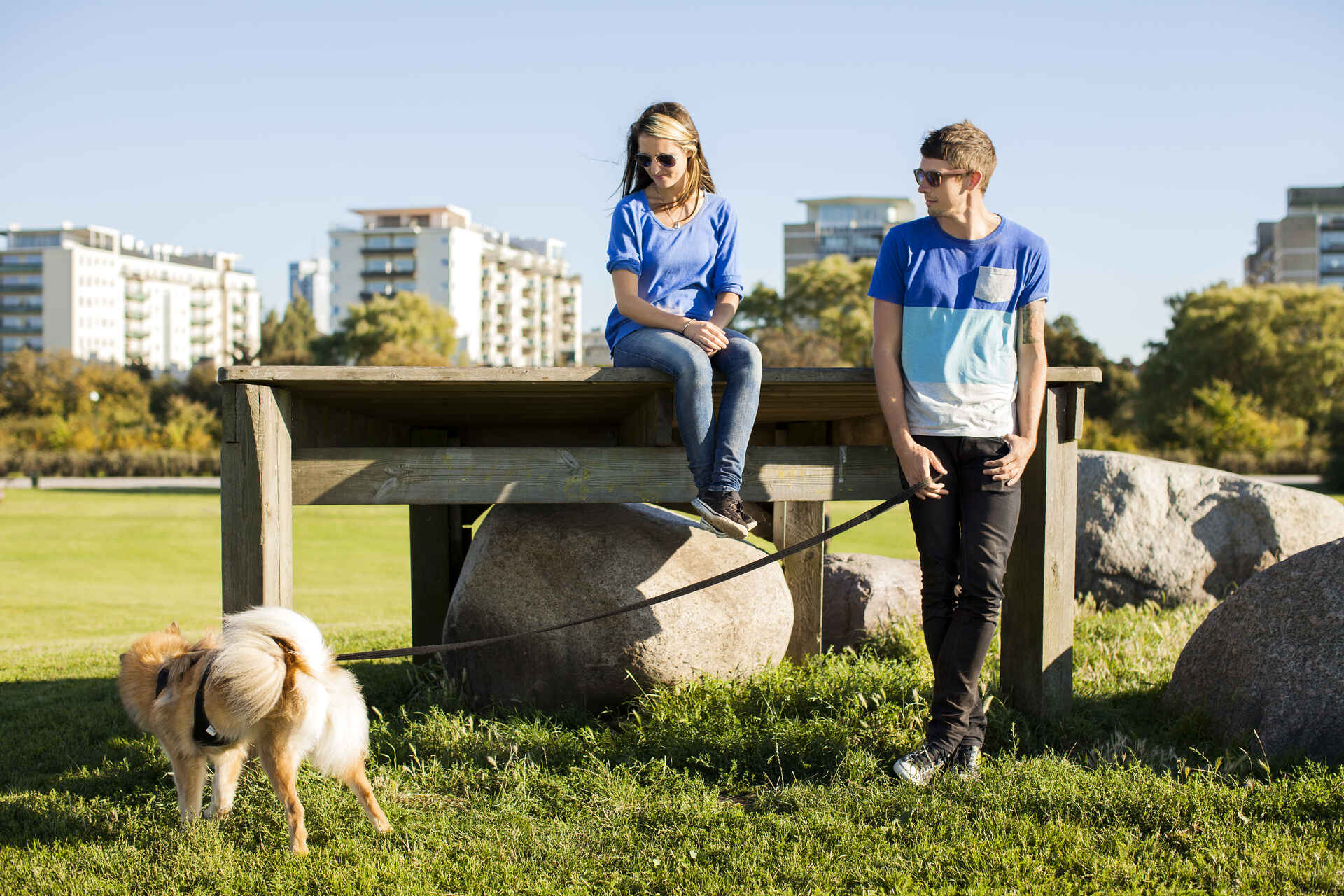
💡 When you’re interacting more frequently with other dogs and dog parents, it can also help you figure out your dog’s individual temperament. Some are simply more open to contact and interaction with others – others less so.
So you can pick up the warning signs your dog’s getting antsy, annoyed, or stressed out – and set some boundaries with other dog parents accordingly. (Especially whether your dog is comfortable being patted or approached.)
Redirect your dog’s chewing & biting elsewhere
Besides chew toys and puzzle feeders, keeping your dog active on the regular can ensure they’re well-exercised enough to get up to any mischief. (Which might include play biting because they have more energy to burn.)
And regardless of their age, size, or breed, most experts agree that at least 30 minutes of daily activity is healthy for most adult dogs.
So you could:
- Take your dog out running, cycling, or hiking with you.
- Set up a DIY obstacle course in your backyard, with some chairs, cushions, and pillows
- Keep them busy with some indoor games for a rainy day. (Especially “bitey” games like tug of war.)
- Make regular walks a priority. Even a few short trips around your blocks a couple of times a day work great.
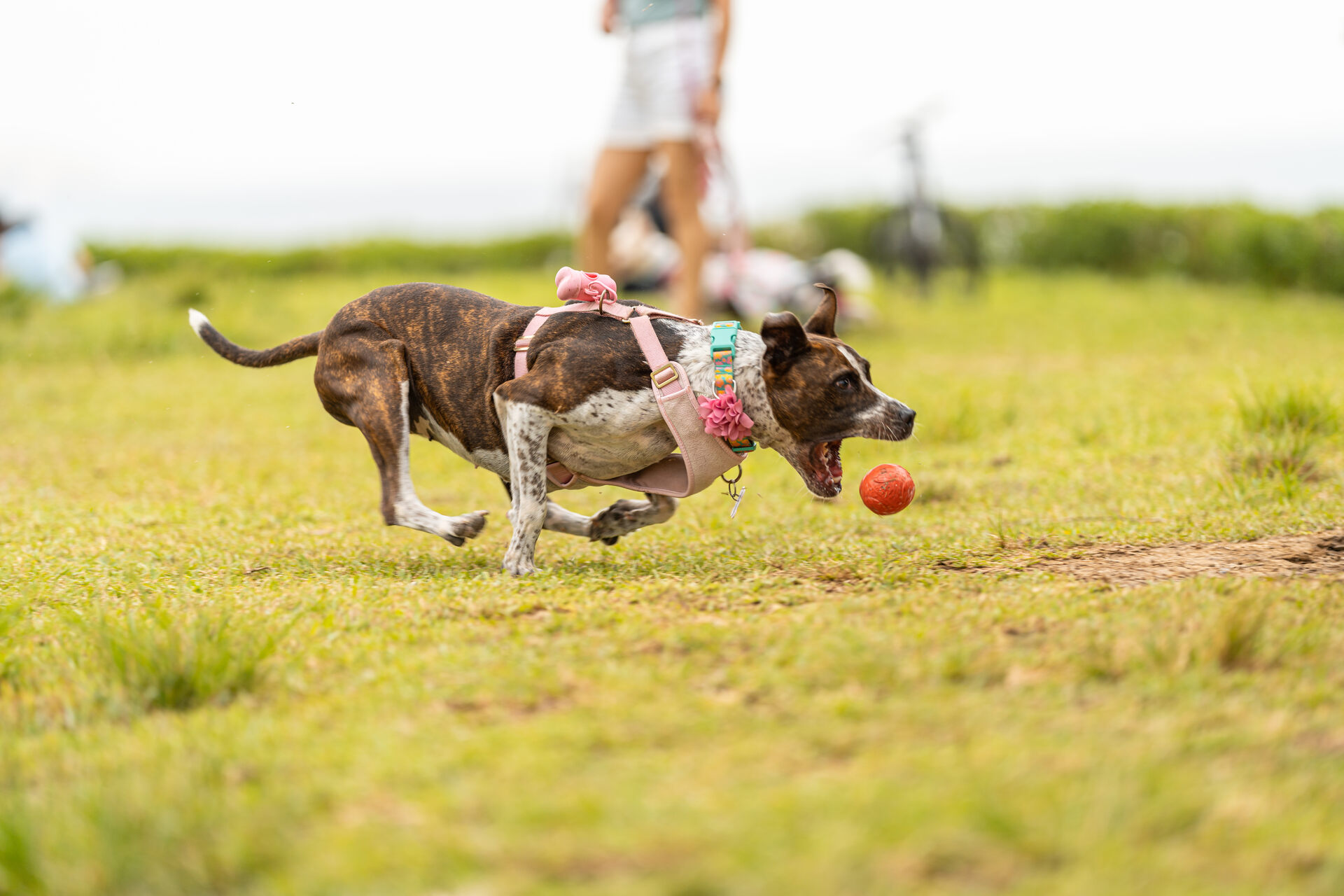
💡 And a great way to stay motivated to your dog’s exercise routine? Setting them daily goals and tracking how active they are compared to other, similar dogs around you.
Which, if you’ve invested in a Tractive device, has never been easier to do – with just a glance at your phone.
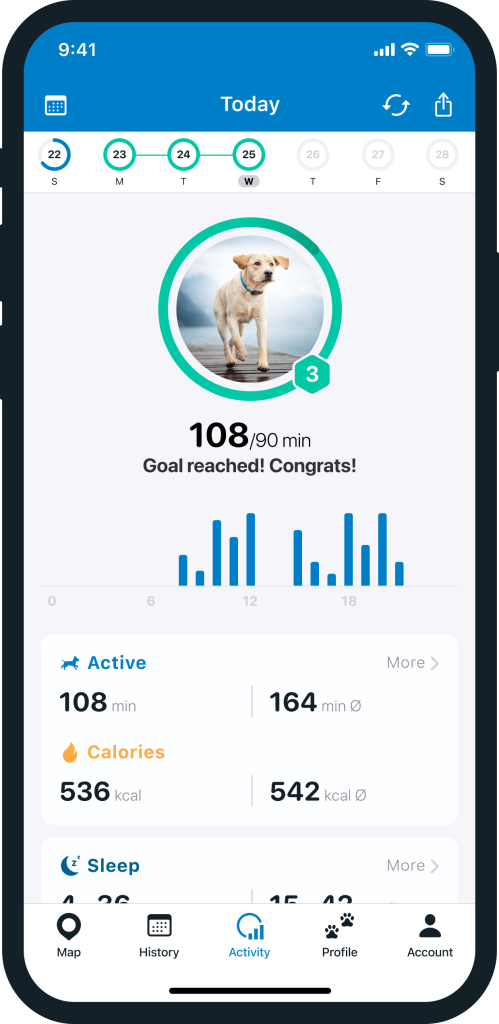
Because once you’ve set yours up, your Tractive Activity Tracker helps you:
- Set daily goals for your buddy’s active minutes
- Get a sense of healthy competition from your community leaderboard – meaning other dog parents and their dogs
All of which can give you that extra push to get that little bit of exercise, walks, or playtime with your buddy for the day.
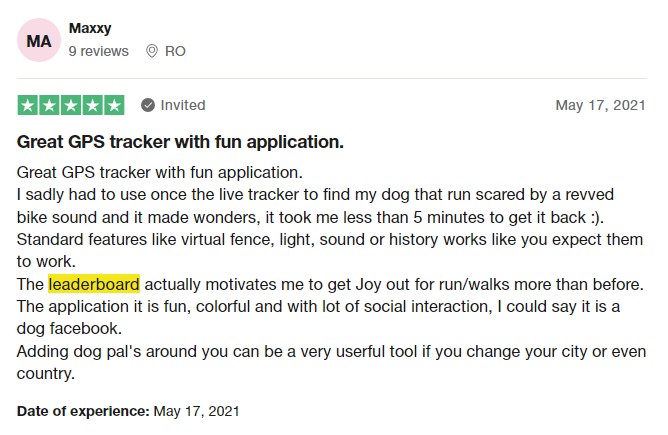
Be consistent with your dog’s training
No matter what behavioral issues you’re dealing with, there’s no substitute for regular training – and especially if you’ve got a dog biting and chewing excessively. And when you’re consistent, you can set your dog up for success for the long run.
How to help your dog figure out bite inhibition
- Play with your dog as you normally might. Expect a little nipping or play biting.
- If your dog bites you harder than normal, get vocal. Make sure they hear you saying “Ouch!” or crying out loud.
- Do your best not to get mad, shout, or scold them – since it might actually worsen your buddy’s anxiety, if any. Rather…
- Stop playing with your dog for a minute or so. (So they learn that “biting = no play time.”)
- Repeat the process every time your dog nips or bites at you.
- Take a break if your dog gets too excited and keeps nipping or biting at you. Put them in “timeout” (i.e., in their crate or in another part of your house) for a few minutes to help them get the hint that “biting = no play time.”
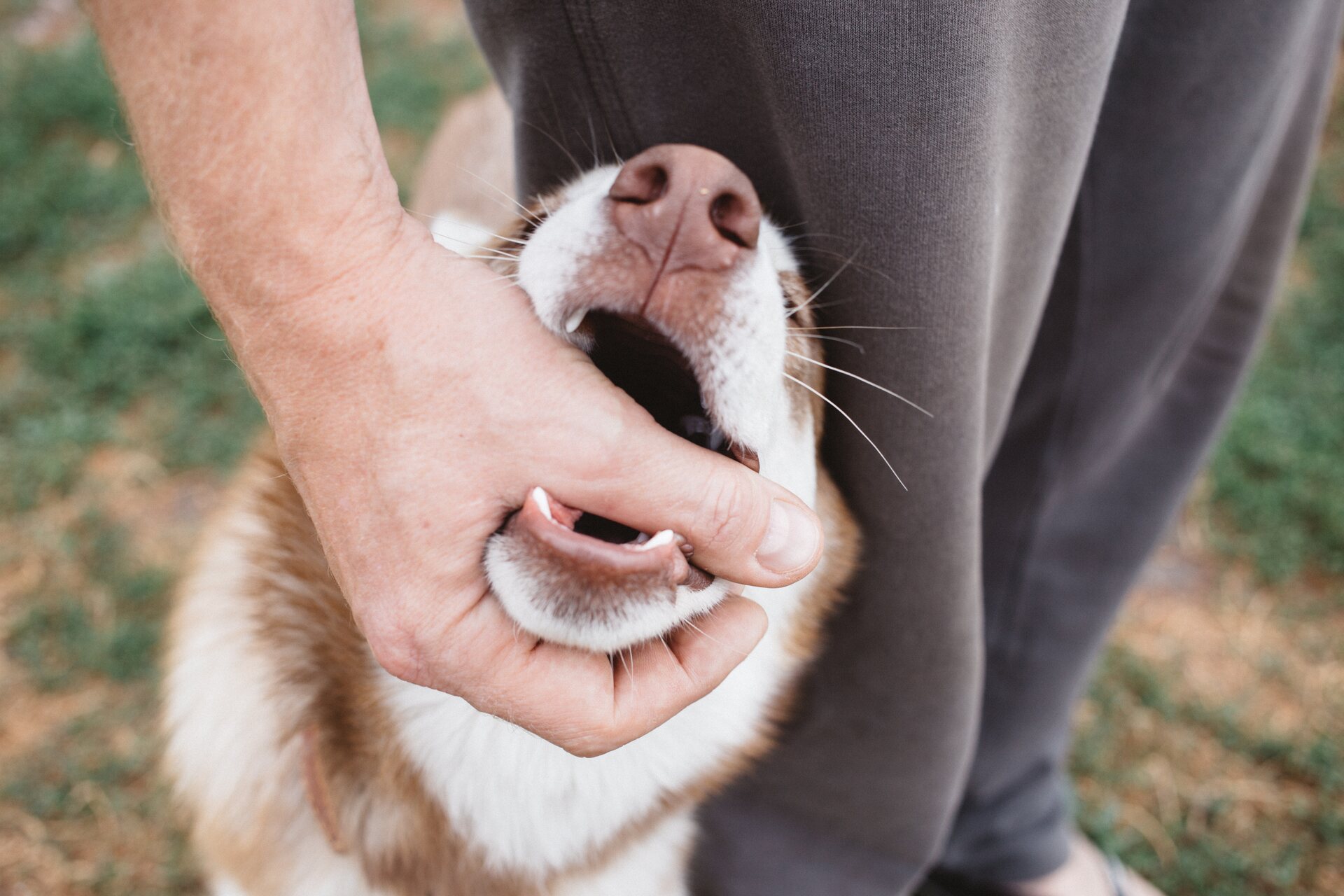
The same principle applies when you’re teaching your dog other commands, like “Drop it”:
- Since you might have treats at hand, your dog might nip or try to bite you out of excitement or impatience.
- In these cases, make sure to only give your dog the treat when they’re gentle. If they grab at it or bite you to get to it, no treat.
- Make sure you reward your dog plenty when they ARE gentle and well-behaved. So they learn “no biting = reward.”
Keep your dog distracted from biting out of instinct
If you’ve got a herding or former hunting dog breed at home, they might nip at your ankles or bite at you to keep you in line. (Like they might an errant sheep or cow on a farm – or a woodland animal.) In times like these, you could distract them with these steps:
- Carry around one of your dog’s favorite chew toys.
- Stop whatever you’re doing if your dog nips at you.
- Attract their attention by showing them the toy.
- Let your dog grab the toy and play with it for a few minutes.
- Repeat the process to get your dog to redirect their chewing and biting to the toy – not you.
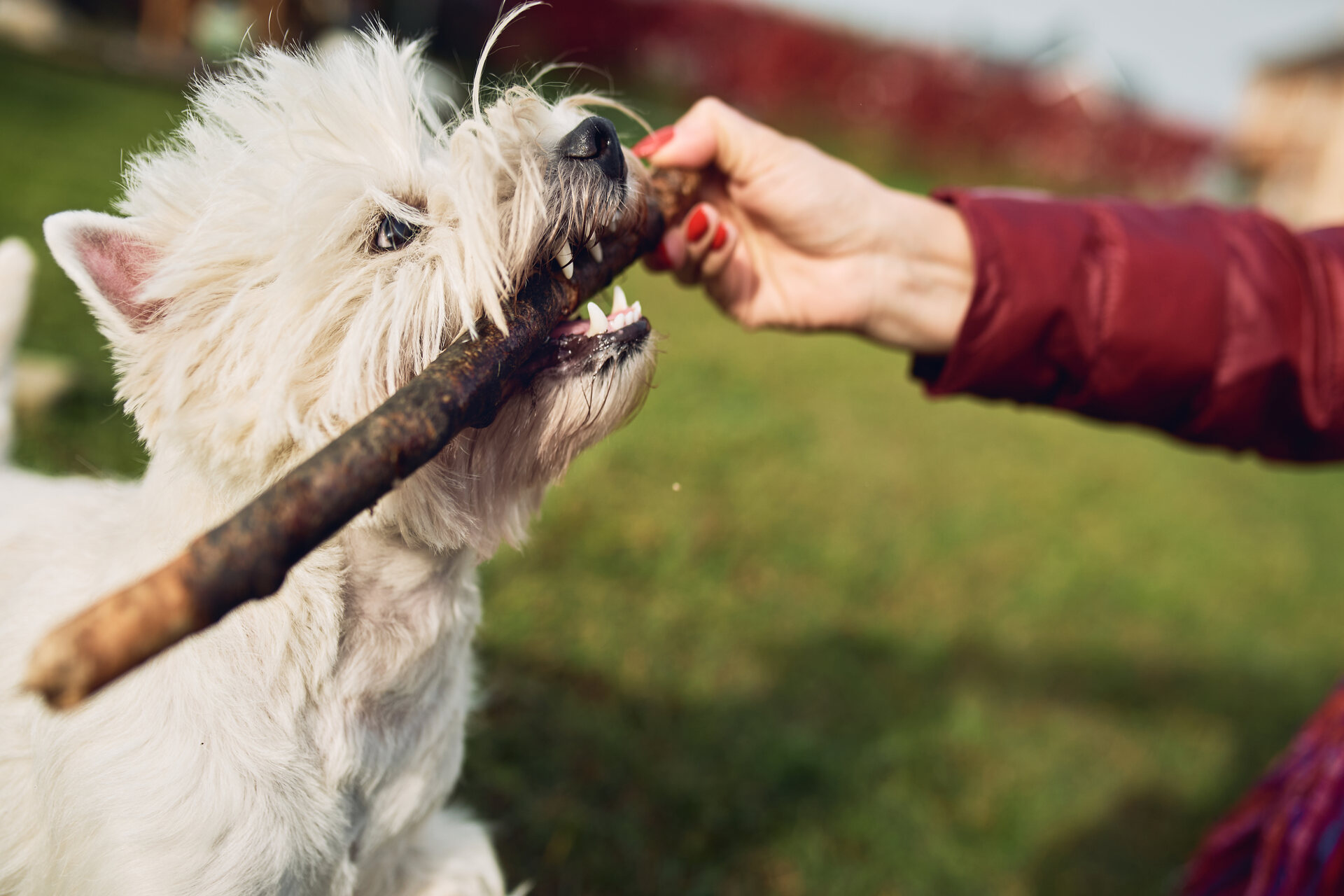
If you’re still running into trouble, you could enroll your buddy in an obedience class. This can help you leave some jobs to the pros, get your dog some socializing time, and ensure they’re trained with positive reinforcement. (And not punishment.)
Besides, we’d also recommend you get your family members (or housemates) in on the same rules. Consistency helps reinforce learning and reduces confusion and anxiety for your buddy.
Use a muzzle only if recommended by a professional
Now you might be wondering, is a dog muzzle an effective tool against biting behaviors? And, well, it’s a mixed bag. While muzzles CAN technically protect against your dog biting others, they only address the symptom – not the root cause of what’s causing your dog to bite in the first place.10
Because if sufficiently threatened (or spooked) enough, a dog can easily still lunge, scratch, or jump on another dog, animal, or person – and cause damage even if muzzled. (Not to mention the risk they’ll overheat, especially in the summer months.)
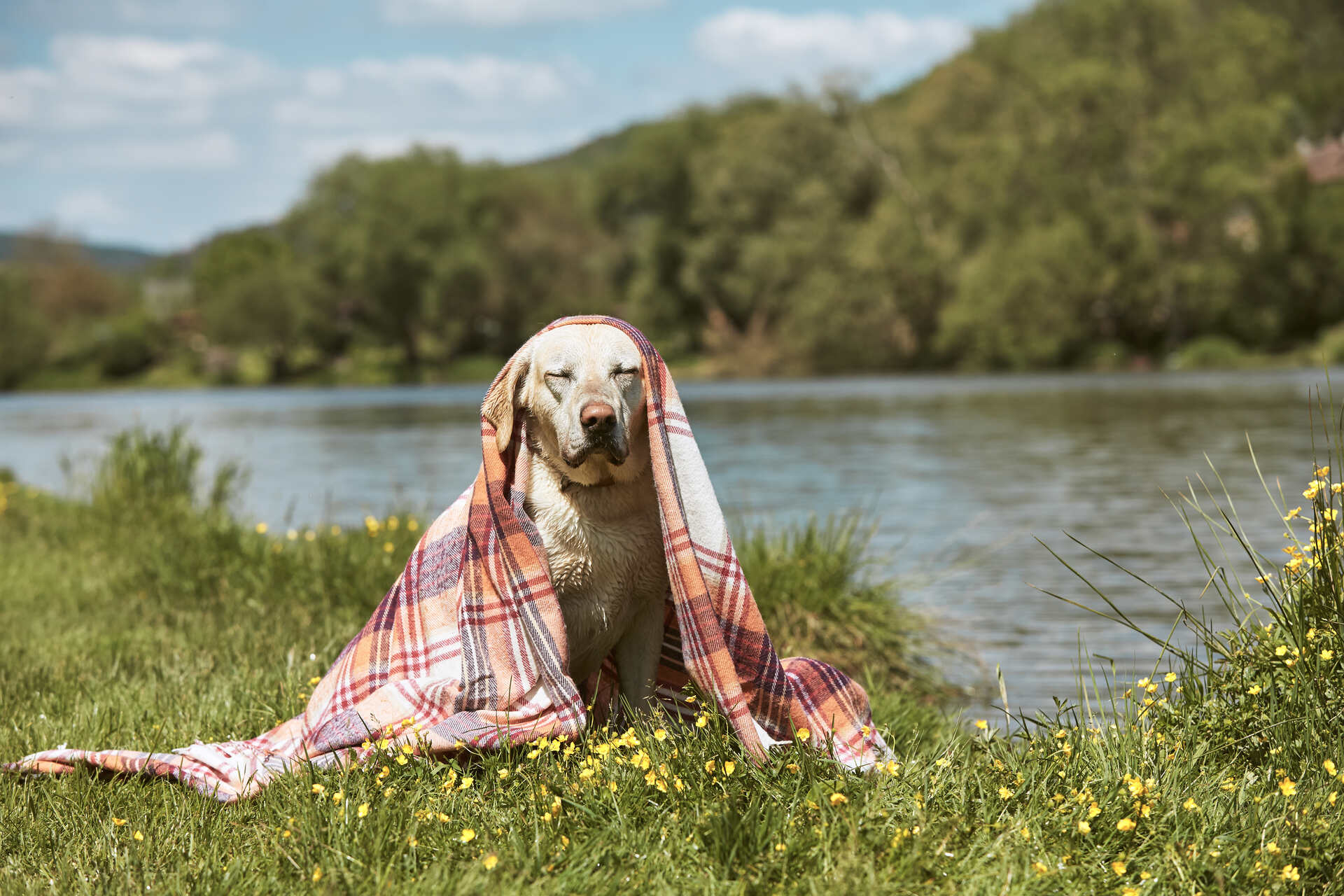
⚠️ So if you’re concerned about any dog biting behavior, make sure you only use a muzzle if your vet or a dog behavioral expert recommends one – keeping your dog’s individual needs in mind.
Because ideally, you’re only using a muzzle:
- For short periods of time
- Under full supervision
- If it’s breathable and well-ventilated
- If it’s designed to allow your dog to drink through it
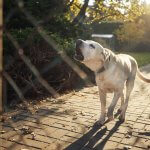
“It is important to understand that a muzzle is not a solution to the underlying problem of a dog’s aggression.
Muzzling a dog can be a helpful tool in specific situations to prevent dogs from biting, but it is not a substitute for proper training and behaviour modification.”
– Pet Control HQ11
Make regular grooming & cleanups a priority
Your dog might not appreciate bathtime – but regular grooming and cleanups mean thousands of dollars saved from otherwise thoroughly avoidable vet bills. (From allergies, mange, infections, injuries, and the endless number of problems you might run into from just a walk outdoors.) All of which can cause your dog to bite themselves to self-soothe from any discomfort.
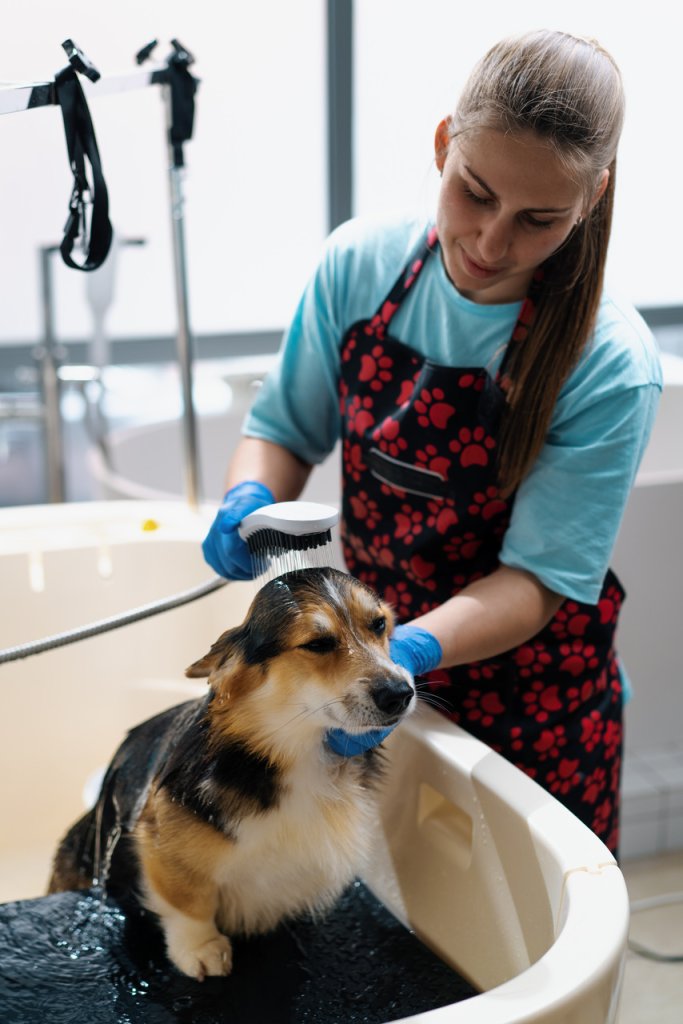
- Make sure to prioritize your buddy’s paws, ears, and feet when you’re both back from the outdoors. These are primary hot spots for bacterial and fungal infections.
- Only use products your vet recommends. Avoid using products designed for humans on dogs (like your shampoo), since it may contain chemicals harmful to dogs.
- Consider dog booties for rainy or snowy days outdoors to protect your buddy’s paws.
⚠️If you notice your buddy showing any changes in behavior or signs of lethargy, a lack of appetite, or just seeming out of sorts – drop by your vet for a checkup.
Set your buddy up for success – and a bite-free life together
Dog biting, whether directed at themselves or others, can be alarming to deal with – but addressing its root causes can go a long way. With a little patience, consistency, and detective work, you can help wean your dog off this behavior and redirect it elsewhere – and live a happy, healthy, bite-free life together.
The main causes for a dog biting others are as a reaction to something in their environment – which they’ve picked up as a learned behavior.
These could include:
- Fear, stress, surprise, frustration or anxiety
- Pain or discomfort – including against themselves
- Not being able to learn bite inhibition from their mother and littermates
- Their breeding history, especially if they’re a herding dog breed or a former hunting dog
- Guarding or protective behavior
In these cases, building your dog’s trust can take time and effort – but you can work wonders by socializing your dog plenty, getting them daily exercise, and investing in regular training. All of which can help create a predictable schedule for your buddy – and reduce their anxiety with time.
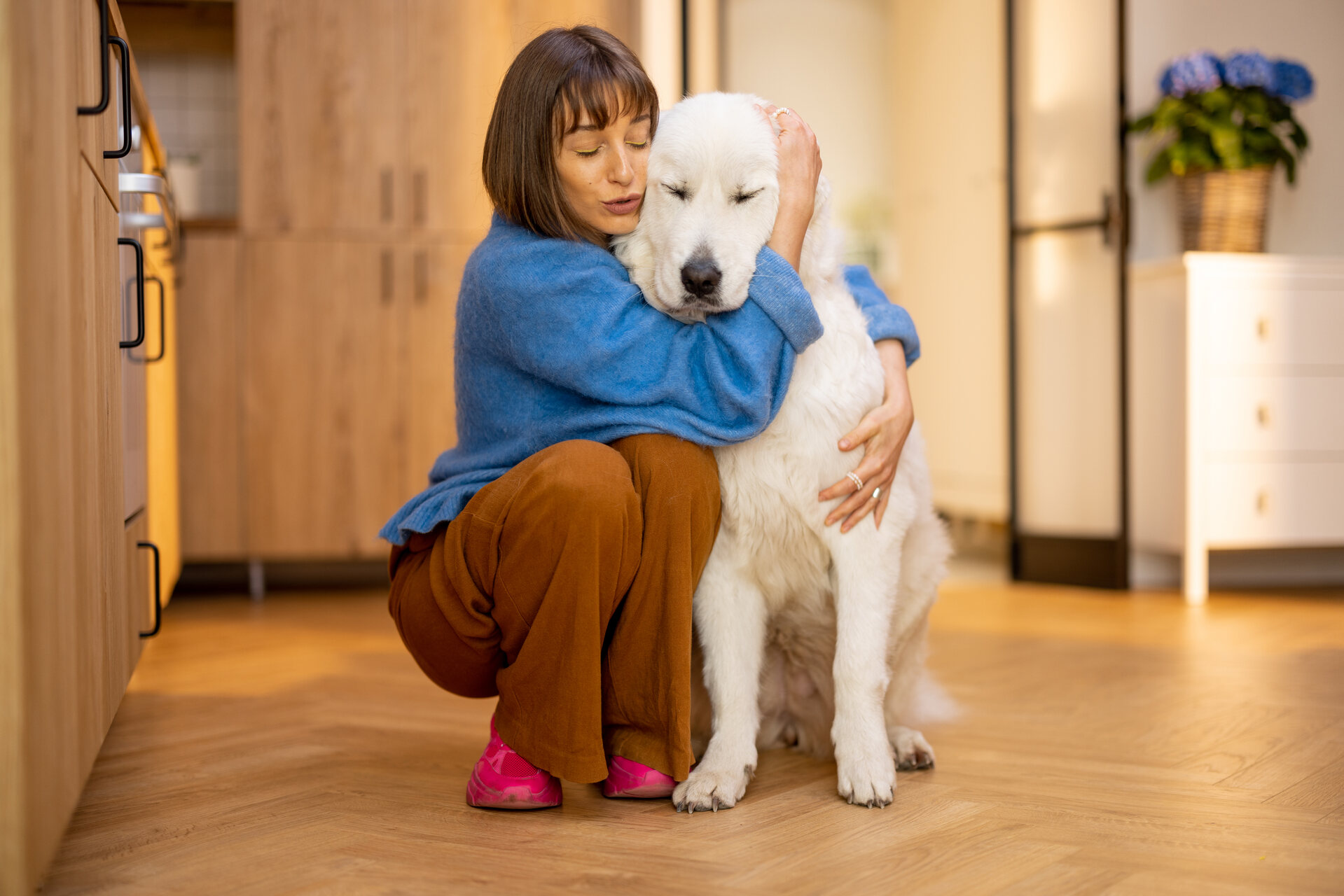
In more serious cases, it’s always a good idea to seek professional help – most certainly from your vet, but also from a certified dog behavioral expert and trainers. They can best advise you what measures to take to prevent your dog from biting out of instinct and what positive reinforcement methods work best.
On the other hand, if you’ve got a dog biting and scratching at themselves primarily, it could be due to:
- Allergies, including from dust or pollen
- Infections from bacteria, fungi, or even parasites like ticks, fleas, and mites
- Injuries from thorns, burrs, and other small, sharp objects in the outdoors
- Other medical conditions affecting their skin, including atopic dermatitis, dry skin, or even hypothyroidism – that may lead them to bite and scratch themselves and even lose fur in the process
Make sure to get in touch with your vet if you notice any worsened signs of illness – including lethargy, not eating or drinking, rashes, fever, or any other concerning symptoms.
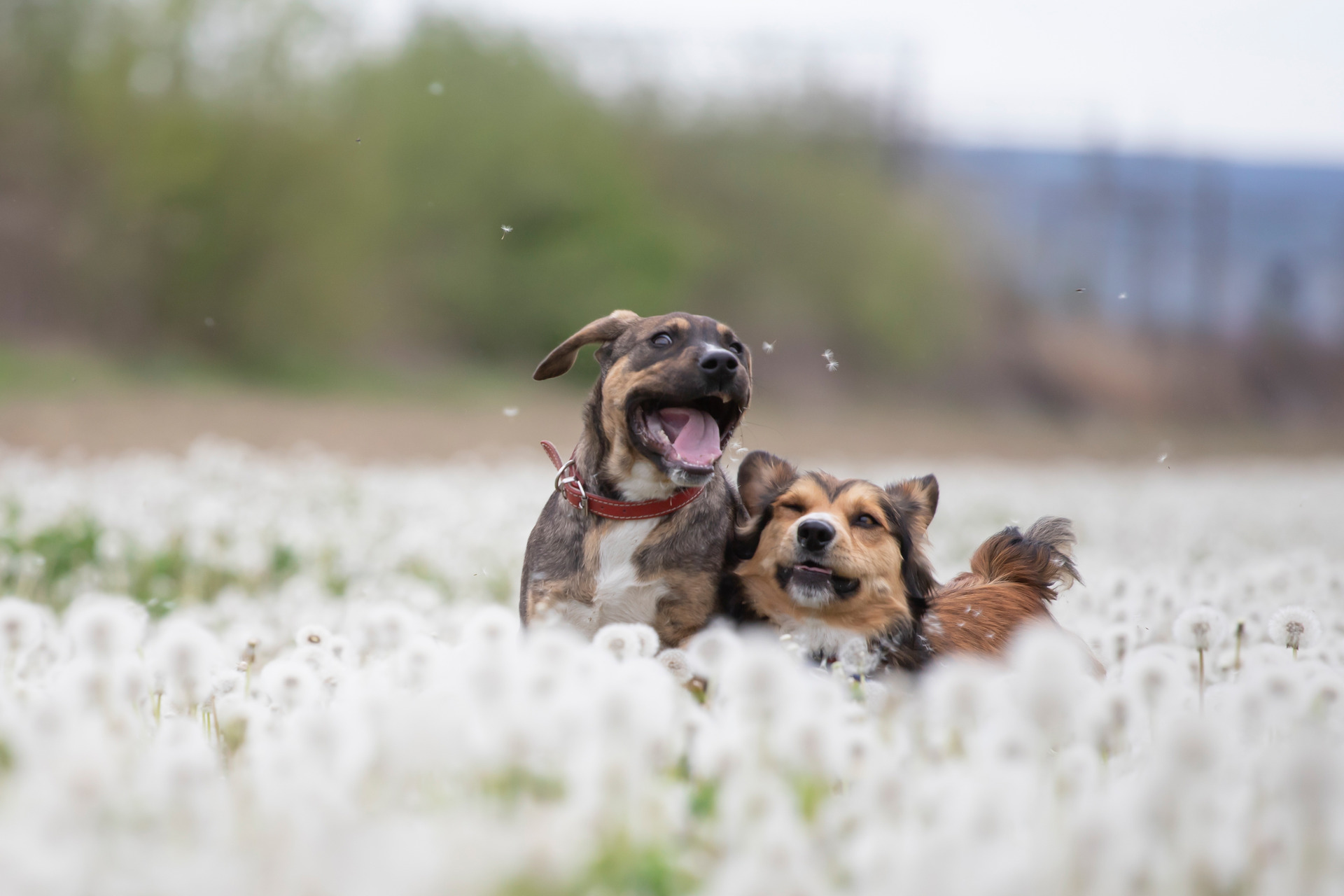
And most importantly…
💡Take an active role in your buddy’s health and well-being – with a GPS and Health Monitor for dogs that’s built to:
- Track your buddy’s activity, so you can ensure they’re well-exercised enough to get up to any play biting or mischief.
- Monitor their every step in real-time, in case you’ve got an anxious, hyperactive, or fearful dog at home that’s more likely to run away.
- Mark out “danger zones” near you, which might include toxic, infectious, or allergy-inducing substances. So you can keep clear of them – and also warn fellow dog parents.
All this in one device – built with love for dogs and for your peace of mind as a dog parent.
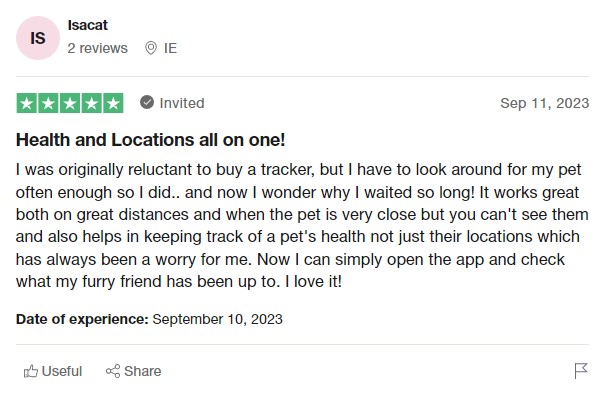
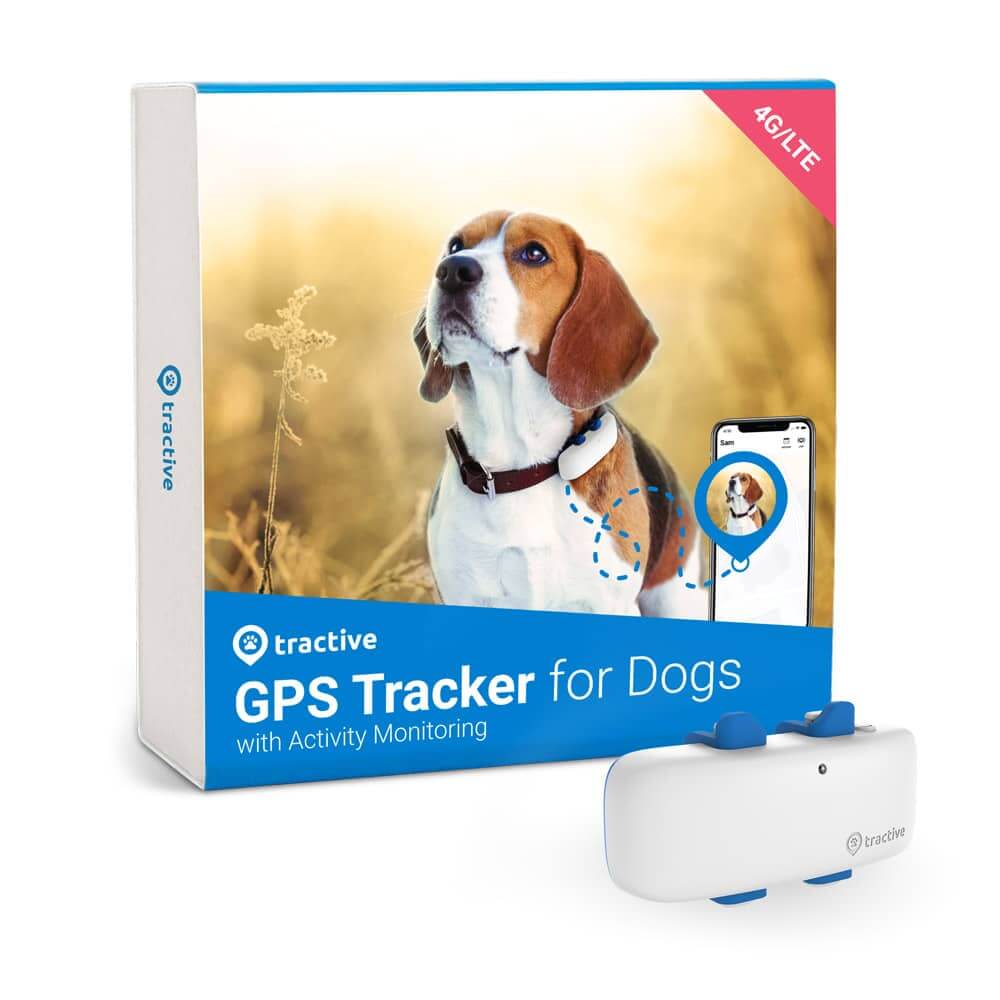
Stay on top of your dog’s wellness
Follow every step in real-time with unlimited range. Get alerts if they wander too far. Keep them happy & healthy with Wellness Monitoring. And let others – like walkers or sitters – keep an eye on your dog too.
For more tips on how to get a puppy to stop biting, here’s canine behavior expert Will Atherton sharing some advice:
And if you’ve liked this post, share it with a friend or a loved one – and let’s help build a safer, kinder world for our furry friends together.


